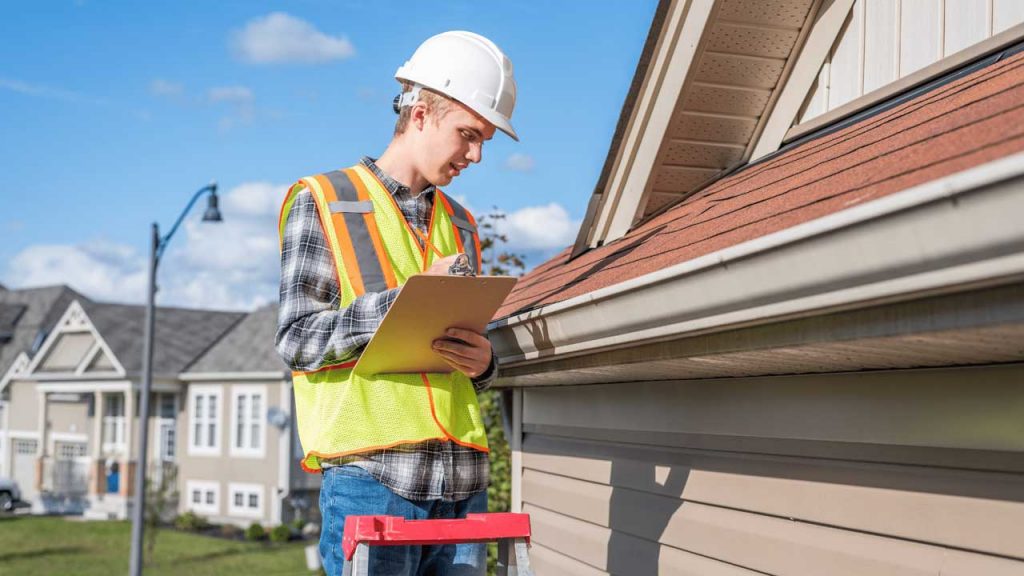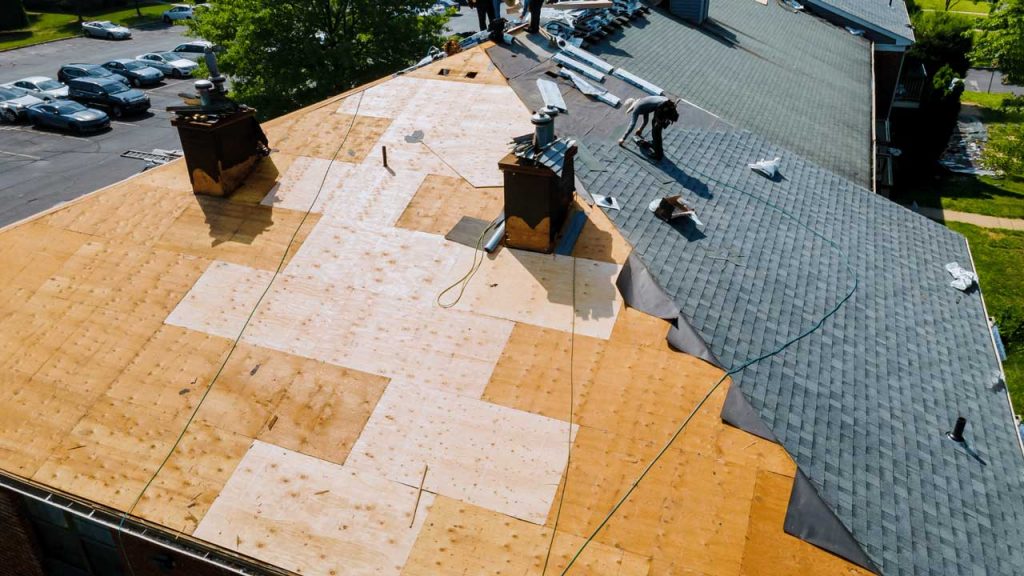When a storm hits, it’s not just the thunder that’s terrifying. The aftermath can also be daunting, especially when you’re left to deal with property damage.
If you’ve ever found yourself asking ‘where do I even start with my insurance claim?’, don’t worry! You’re not alone and we’re here to guide you through this challenging process. It may seem like a mountainous task now, but understanding your policy, documenting the damage, contacting your insurer and getting a professional assessment are crucial first steps on this journey.
As homeowners, we often underestimate the power of knowledge when it comes to our insurance policies – until we need them most. It’s during these testing times that clarity is key. That’s why in this article; we’ve broken down four essential tips every homeowner should know about filing storm damage insurance claims.
We’ll take you step-by-step through each stage, from comprehending your coverage to negotiating with insurance adjusters and making repairs to your home.
Hold onto hope because help is at hand!
Understanding Your Policy
Don’t you dare let a storm catch you off guard – it’s absolutely crucial that you truly understand your insurance policy because when Mother Nature strikes, she rarely pulls her punches.
Remember, knowledge is power and having a complete understanding of what your homeowners insurance covers can save you from unexpected heartache and financial distress.
So grab yourself a cup of coffee, cozy up in your favorite chair, and get familiar with the fine print.
Look for coverages related to windstorms, hail damage, or any other perils that are common in your area.
Now here’s something that might surprise you: all home insurance policies aren’t created equal.
Some may cover roof repairs after a storm but not flood damage.
Others might only replace items at their current depreciated value instead of their full replacement cost.
Wouldn’t it be dreadful to find out too late that your policy doesn’t fully cover all potential damages?
That’s why it’s so vital to take the time now to review what’s covered and what’s not on your policy.
And don’t hesitate to call up your agent if anything seems unclear – they’re there to help guide you through this maze!

Documenting the Damage
It’s imperative to meticulously record all inflicted harm, as this will greatly benefit your case when seeking compensation for any necessary repairs.
Here’s the thing: insurance companies absolutely love details – the more you provide, the better your chances of having a smooth claims process.
Start by taking pictures or videos of the damage from multiple angles and ensure it captures even the smallest details.
Also, jot down notes about what happened before, during, and after the storm event that caused these damages. These could prove valuable in explaining your situation to an assessor who wasn’t there to witness it first-hand.
Remember not to throw anything away until an insurance adjuster has seen it. Even if a damaged item seems worthless to you, every bit counts in building up your claim’s credibility.
You might feel overwhelmed by everything that needs documenting but don’t rush through this process – take time out to do it right! Your future self will thank you when those repair costs roll in and are fully covered because you took steps today for thorough documentation.
This is one instance where being thorough can save you tons of stress (and money) in the long run!
Contacting Your Insurer
Once you’ve got all your documentation in order, make a beeline for the phone and give your insurer a call. You might feel a little anxious about this step, but remember that they’re there to help you navigate these choppy waters.
Be as detailed as possible when describing the damage and let them guide you through their specific claims process. There’s no such thing as too much information here – the more they understand about what happened, the better equipped they’ll be to assist.
During this conversation, don’t forget to ask questions. If there are parts of your policy or procedure you don’t fully grasp, now is the time to seek clarification. Remember, it’s not just about getting things fixed; it’s also understanding how the process works so that if this happens again (touch wood), you’ll know exactly what to do.
Get comfortable with your insurance jargon – deductible, premium, liability – because knowing these terms will only empower you during this tricky time.
Getting a Professional Assessment
Next, you’ll want to bring in a pro to evaluate the extent of the destruction. Why? Because an expert’s eye can pinpoint damages that you might miss and give a more accurate estimate of repair costs.
You’re not just hiring them for their keen eyes; they also know how to document everything properly – something your insurance provider will definitely appreciate. Believe it or not, these professionals have been through this process countless times before. They’ll know exactly what needs to be done and how best to do it.
Remember, this isn’t about getting someone on your side against the insurance company; instead, it’s about ensuring you get every penny due for repairs. The pros can help identify any hidden damage that could lead to bigger problems down the line if left untreated. They’ll speak the language of your insurance adjuster and ensure all bases are covered in terms of necessary repairs and associated costs.
So don’t hesitate—get that professional assessment as soon as possible because when it comes to storm damage claims, being thorough is key!
Filing Your Claim

After the dust has settled and you’ve had a professional evaluate your home, there’s no time to waste – you’ve gotta file your claim pronto!
It might feel like a daunting task, but don’t worry, we’re here with you every step of the way. Start by contacting your insurance company directly and giving them all the necessary details about what happened. They’ll guide you through their specific claims process which may include filling out forms or providing additional documentation.
Remember to be thorough and accurate while detailing your losses; it can make a huge difference in how smoothly the process goes.
Now here’s something crucial: Keep track of every communication with your insurer — this includes emails, phone calls, and letters. This will help if any discrepancies arise later on. And don’t hesitate to ask questions if anything seems unclear during this process; after all, it’s better to clarify doubts now than deal with complications later on.
Remember that patience is key here – processing times can vary depending on the severity of damage and number of claims being filed at once. So hang in there! Your peace of mind is worth the wait.
Negotiating with the Insurance Adjuster
Dealing with the insurance adjuster can feel like a tug-of-war, but remember: you’re stronger than you think and we’re rooting for you.
Don’t let their first offer intimidate or discourage you; it’s just part of the process. You have every right to question their evaluation and negotiate for a higher settlement if necessary. It’s crucial that you understand your policy thoroughly so that you can stand strong and fight for what’s rightfully yours.
Don’t be afraid to challenge any discrepancies between your contractor’s estimate and the adjuster’s appraisal—if they’ve missed something, let them know! Ask for a detailed explanation in writing if there are differences in pricing or damage assessments.
Keep calm, stay firm, and remember this isn’t personal—it’s business. After all, your home is more than just an asset; it’s where life happens.
So stand tall, weather the storm, and ensure your home gets the care it needs to return to its former glory!
Repairing Your Home
After successfully negotiating with the insurance adjuster, you’re now ready to take another significant step towards restoring your home. You’ve done a great job so far, and we’re here to guide you through this next phase.
Let’s roll up those sleeves and dive into repairing your haven.
Starting repairs can be daunting, but don’t worry—it’s more manageable than you think! First off, always remember that safety comes first. Before doing anything else, ensure that your home is structurally sound and safe for work to begin. It might be best to hire professionals for this task—they’ll know what warning signs to look out for and how to fix them effectively.
Next, consider hiring a reputable contractor who specializes in storm damage repairs. They’ll have the experience and knowledge necessary to restore your home back to its former glory or even better!
And remember, keep all receipts from any repair work—they’ll come in handy if there are disputes about the claim settlement later on.
So go ahead, breathe a sigh of relief knowing that each step brings you closer to having your cozy nest back in shape!

